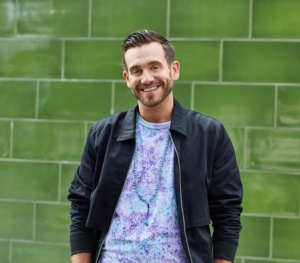By Charlie Morley – the UK’s leading lucid dreaming teacher and best-selling Hay House author of four ground-breaking books on lucid dreaming, sleep & mindfulness.
What if I was to tell you that you can transform your waking life while you sleep? That you could not only solve your biggest problems and heal emotional wounds but that you could wake in the morning with a surge of renewal and inspiration. You would still benefit from the same amount of rest, and actually, more often than not you’d wake feeling even more refreshed than you would ordinarily. Sounds like a no-brainer surely? The thing is, most people don’t realise they’re actually sitting or rather, lying on a goldmine, that during the nocturnal hours lies untapped potential that’s just ready for the taking.
What is a Lucid Dream?
A lucid dream is a dream in which you are aware you are dreaming, and you’re able to direct and influence the dream at will. It’s something that has been practised by various traditions, cultures, religions for centuries. Humans have been doing this since eternity began yet it’s only been in recent decades that we’ve realised that you can actually do some pretty powerful inner growth work within lucid dreams.
Rather excitingly, lucid dreaming is something that can be learnt, even if you’re not currently recalling many of your dreams. Here in the West it was first recognised scientifically by a Dutch psychiatrist named Frederik van Eeden who came up with the term for lucid dreams in 1913. Though it was in the 1970s that lucid dreaming really exploded and various studies validated and delved deeper into the field.
How Can Lucid Dreaming Support Personal Growth?
During lucid dreams, neural pathways in the brain can be strengthened and created, just as they can while we’re awake. This means that dreamers who consciously engage in certain practices within their lucid dreams, such as sport, acts of kindness or engaging with joy, are creating and strengthening the pathways associated with those practices, making them easier to do in the waking state.
One of the easiest ways to explore our unconscious is through our dreams. Lucid dreaming takes this exploration a step further because as hypnotherapy expert Valerie Austin once told me, it allows us ‘access to this data straight from the unconscious without it being edited by our rational, conscious mind’. Our true capacity is just waiting to be revealed to us, and when we start to do mind-training work such as meditation, self-hypnosis, energy work and, of course, lucid dreaming, we being to get an idea of just how deep the iceberg goes.
Benefits of Lucid Dreaming
When you’re within a lucid dream, you’ve accessed a really refined state of consciousness. It’s a bit like a state of hypnotherapy, only more powerful, and you’re totally in the driving seat. When in a lucid dream state, you can choose to explore your psyche, whether that’s to:
- Solve problems you’re facing at work
- As a tool to help find inspiration on a project
- To heal your inner child
- To practise a skill you want to perfect
- Develop your spiritual path by meeting your teachers
- Finding other forms of inspiration
- As a way to understand yourself better
- Heal a phobia
- Or simply just to have fun
How to Have a Lucid Dream
Here are a few steps in becoming lucid…
- Keep a dream diary. The more you’re able to recall your dreams, even just fragments, the easier it will be for you to have a lucid dream. That’s because through keeping a dream diary you’ll become more familiar with the dream state, therefore, the next time you’re dreaming you might recognise that it’s a dream and wake up in the dream!
- Try to stay mindfully aware during the hypnogogic (the state you enter just before you fall asleep) you may then enter straight into a lucid dream if you remain mindful as you fall asleep.
- Try some reality checks during the day. Every time something surreal, unusual or uncanny happens in the day, ask yourself: Am I dreaming? If you get into this habit you’re more likely to ask yourself that same question within an actual dream, just before you become lucid.
- If you think you’re dreaming, ‘test the dream’ to see if it’s real:
- Try switching on a light at the wall. Your brain won’t be able to make the light appear as quickly (or in the same way) as a real-life light switch.
- Look at your hands, look away, and then look back at your hands. When you look back at your hands, they will be blurry or misshapen because the mind can’t replicate the same image in succession
- Try to read text or your mobile phone screen in a dream. You’ll find the words are eligible, jump around or are difficult to read.
About the expert
 Charlie Morley is the UK’s leading lucid dreaming teacher and also one of the UK’s sleep experts who has worked with veterans to help them overcome sleep disturbances. His research and approach can be found in his latest Hay House book, Wake Up to Sleep. He also offers this as a course to both veterans and civilians with sleep disorders.
Charlie Morley is the UK’s leading lucid dreaming teacher and also one of the UK’s sleep experts who has worked with veterans to help them overcome sleep disturbances. His research and approach can be found in his latest Hay House book, Wake Up to Sleep. He also offers this as a course to both veterans and civilians with sleep disorders.
Charlie is a best-selling Hay House author of four ground-breaking books on lucid dreaming, sleep & mindfulness. For the past 15 years he’s been running immersive sleep & dream retreats across the globe and he’s presented his work at both Oxford and Cambridge Universities as well as the Ministry of Defence. Charlie also offers a wide range of workshops, retreats and online courses. Check out his website or social channels as he runs various workshops in London and sometimes free in-person events. He also hosts a monthly FREE Drop-In / Meet Up (an online Dream Circle). Find out more at www.charliemorley.com.
For beginners interested in learning more about lucid dreaming, try reading Lucid Dreaming: A Beginner’s Guide to Becoming Conscious in Your Dreams by Charlie Morley.

